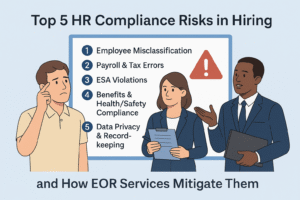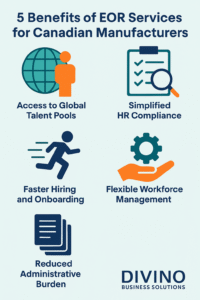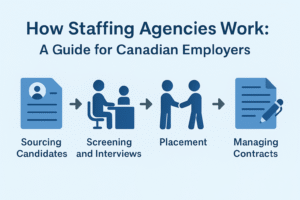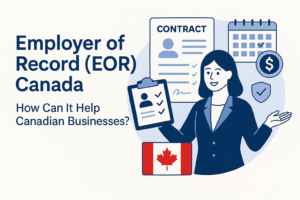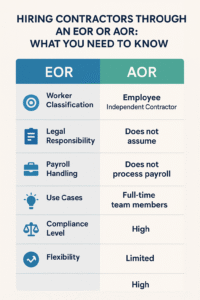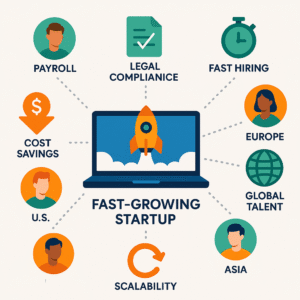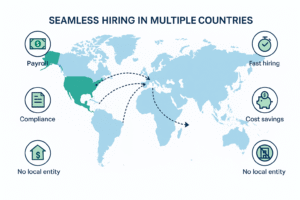Introduction: Weathering the 2025 Trade Tempest
Canadian businesses in 2025 face an economic storm — U.S. tariffs, supply chain instability, and hiring challenges. A 25% tariff on Canadian steel, retaliatory measures from Ottawa, and global disruptions have shattered decades of predictable trade. But history shows resilience thrives in adversity.
From Ontario’s factories to British Columbia’s export hubs, companies are adapting. This blog unpacks the challenges and equips you with actionable strategies to not only survive but thrive — backed by real-world insights and SEO-optimized structure.
Impact of 2025 U.S. Trade Tensions on Canadian Businesses
The U.S. has imposed sweeping tariffs, affecting Canadian steel, aluminum, lumber, auto parts, and more. In response, Canada hit back with $30B in retaliatory duties. These tit-for-tat measures have amplified uncertainty.
Sectors hit hardest include:
- Manufacturing: Input costs up, exports down.
- Construction: Lumber, cement, and equipment delays.
- Agriculture & Food: Tariffs on pork, canola, and more.
- Textiles & Electronics: Disrupted Asian imports and U.S. sales.
Consequences go beyond trade. Consumer prices are rising, hiring has slowed, and recession fears loom. As EDC’s 2025 outlook notes, many exporters are now filing for CUSMA compliance to avoid costly duties.
Canadian Economic Resilience: Learning From the Storm
Canadian firms weathered COVID, global shipping backlogs, and the 2018 trade wars. Those who pivoted early — by diversifying, digitizing, and strengthening domestic operations — came out stronger.
Resilience now requires:
- Speed in decision-making
- Scenario planning
- Strategic hiring and workforce retention
Economic uncertainty is painful — but it also accelerates innovation. As Janice Gross Stein said, “We’ve left the world of probability — now we operate in possibility.”
Strategies to Thrive in 2025
1. Diversify Markets & Supply Chains
Avoid overreliance on U.S. or Chinese routes.
- Expand exports to EU (CETA), UK (TCA), and Asia (CPTPP)
- Source materials from Vietnam, Mexico, or within Canada
- Build multi-supplier redundancy to avoid future disruptions
Case Study: Firms that diversified after the 2018 trade war grew 22% faster (RBC 2022).
2. Strengthen Local Presence
- Source locally where possible
- Market to Canadian consumers
- Brand around “Made in Canada” value and trust
This reduces tariff exposure and deepens local loyalty.
3. Leverage Government Support & Trade Agreements
Available supports:
- BDC Pivot-to-Grow Loans
- EDC Trade Impact Program (TIP)
- Export diversification funds
Consult your EDC advisor or local Chamber of Commerce for help unlocking these.
4. Embrace Technology
Future-ready businesses are investing in:
- ERP tools for inventory tracking
- AI-driven forecasting
- Blockchain for supply chain transparency
Deloitte’s 2024 study showed digital adopters rebounded 44% faster after shocks.
5. Manage Financial Resilience
- Optimize cash flow and reduce unnecessary overhead
- Forecast for multiple economic outcomes
- Re-negotiate contracts for tariff contingencies
Your accountant or CFO should lead quarterly stress tests — assume worst-case tariff outcomes.
6. Talent Strategy: Stay Lean, Stay Skilled
Uncertainty affects hiring. Retention is key.
- Use temp/contract staffing to stay flexible
- Prioritize skills-based hiring
- Offer upskilling for current employees
Or leave your hiring to us — and we’ll take it from there. Divino Business Solutions helps businesses build agile, high-performing teams.
7. Scenario Planning & Leadership Agility
- Map 6-, 12-, and 18-month scenarios
- Identify triggers for each (e.g. tariff spikes, supplier loss)
- Reverse-engineer action plans
Resilient leadership isn’t reactive — it’s prepared.
Key Takeaways
- The 2025 trade war is disrupting Canadian business at every level
- Diversification, local supply chains, and smart hiring are key to resilience
- Government support, technology, and workforce planning are your biggest levers
FAQ
Q1. How are U.S. tariffs affecting Canadian small businesses?
They’re raising import costs, delaying materials, and cutting into profit margins — especially for firms with U.S. customers or Chinese suppliers.
Q2. What’s the best way to protect my business from trade disruptions?
Diversify markets, reduce single-country dependence, and digitize operations.
Q3. Are there any government support programs available?
Yes. EDC’s Trade Impact Program and BDC’s tariff-relief loans are top options. Work with advisors to unlock them quickly.
Q4. Should I pause hiring in 2025?
Not necessarily. Instead, focus on lean, flexible workforce strategies — or outsource hiring to expert firms.
Conclusion: From Storm to Strength
Yes, 2025 is turbulent. But resilience is more than survival — it’s smart adaptation. The Canadian businesses that act now — by diversifying supply chains, going digital, and rethinking hiring — will not just weather this storm.
They’ll lead the next growth wave.
Let Divino Business Solutions help. From workforce strategy to staffing flexibility, we’re your partners in navigating uncertainty — and turning it into opportunity or check out how to simplify recruitment or The Bias of Interviews: Are You Just Hiring a Smile?
Citations :
- MacMillan SCG – 2025 Trade War Impact
- EDC 2025 Economic Outlook
- BDC – Tariff Resilience Programs
- Clyde & Co – Canadian Trade War Analysis
- Deloitte Canada – Digital Resilience Report 2024
- Reuters – Canadian Companies Pivot Post-Tariffs

